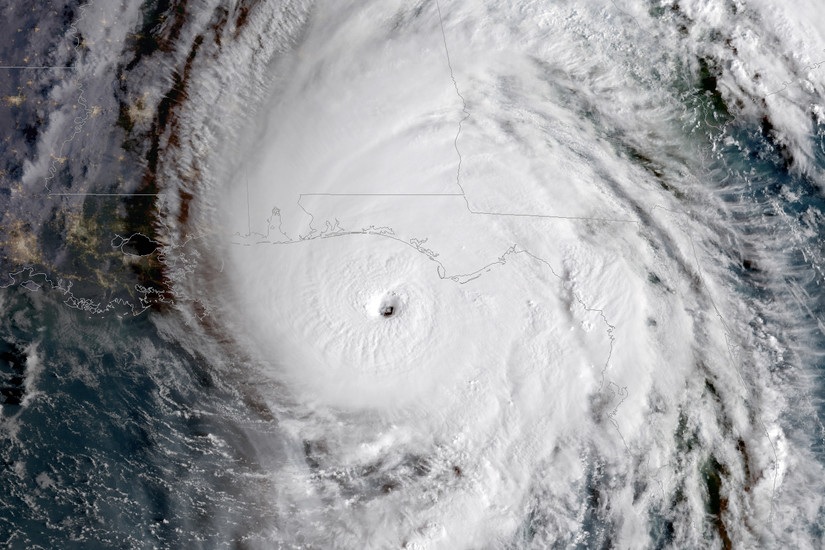
UPDATE:
The column below mentions how the devastation at Tyndall Air Force Base caused by Hurricane Michael is “emblematic” of the damage and destruction experienced throughout the Florida Panhandle and beyond.
The military is responding with a speed, efficiency and resolve equally emblematic of how our military typically reacts to so many natural disasters.
Just consider the response by the 821st Contingency Response Group (CRG), the 23rd Special Tactics Squadron airmen and the men and women at Tyndall.
Within 24 hours, the Special Tactics Airmen were in control of an airfield which flight line had been “devastated,” and within 48 hours the U.S, Air Force’s second largest transport aircraft – the C-17 Globemaster – had landed at Tyndall bringing much needed equipment and supplies to restore the base, to “re-initiate” the airflow and in support of Hurricane Michael relief efforts.
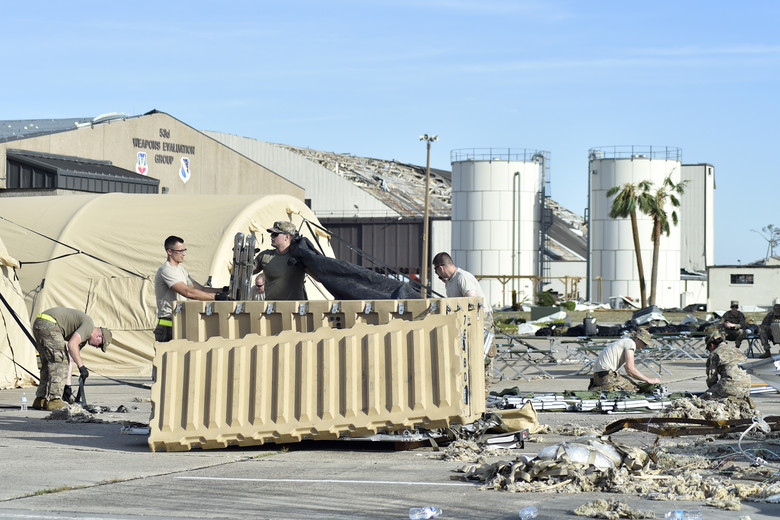
Airmen from the 821st Contingency Response Group offload much needed equipment and supplies to help restore Tyndall Air Force Base operations after Hurricane Michael tore through the area as a Category 4 (U.S. Air Force photo by Tech. Sgt. Liliana Moreno)
In both the photo above and the video below, one can see relief and reconstruction efforts taking place with the damage and destruction clearly visible in the background.
In the words of Air Mobility Command commander, Gen. Maryanne Miller, “We recognize the world is unpredictable…Mobility Airmen pride themselves on the ability to continuously respond to numerous, simultaneous high priority missions on short notice while maintaining support for global combatant commands.”
Original Post:
As the remnants of Hurricane Michael are finally moving out over the Atlantic Ocean, the death and devastation left by the strongest hurricane on record to hit the Florida Panhandle are becoming increasingly and disturbingly apparent.
The latest number of fatalities attributed to Michael is twelve, “a number that officials worry could rise.”
We have seen the photos and videos of the utter destruction left behind by Michael in Mexico Beach and nearby, an area that has been called “ground zero.”
Not too far from Mexico Beach, about 15 miles to the northwest (and just southeast of Panama City), sits (or sat) Tyndall Air Force Base. Tyndall sustained a direct hit from the category 4 hurricane, with the eye of Michael passing right over the base.
Col. Brian S. Laidlow, installation and Wing commander, wrote in a letter to the men and women based at Tyndall (previously evacuated) that the “base took a beating,” requiring extensive cleanup and repairs and that he would not recall the airmen and their families “until we can guarantee your safety.”
Considering the extent of the disaster, those words are putting the catastrophe “mildly.”
The Stars and Stripes describes the impact as follows:
Tyndall Air Force Base sustained “catastrophic’’ damage as Hurricane Michael struck the Florida installation head on, destroying buildings and potentially leaving the post vacant for weeks, Air Force officials said Thursday.
The Category 4 storm, the strongest to ever hit the Florida Panhandle, tore roofing from aircraft hangars and mangled buildings at Tyndall, located just outside Panama City, Fla., according to Air Force officials who reported “widespread catastrophic damage” primarily from winds that exceeded 150 mph.
According to Defense One, “Tyndall Air Force Base is in ruins. Michael’s eye passed right over the base, located just east of Panama City, Florida, bringing 130-mph winds that leveled hangars, damaged almost every house, and flipped a retired jet on static display. Recovery teams found “widespread catastrophic damage…”
I am focusing on Tyndall Air Force Base for several reasons:
• Being so close to “ground zero” it is emblematic of the damage and destruction experienced throughout the area.
• If a sturdy military installation such as this one, home to the 325th Fighter Wing (F-22 “Raptors”) and host to more than 30 tenant organizations, can sustain such “catastrophic” damage, it is easy to visualize the destruction experienced in other Panhandle localities.
• One of my early military assignments in the late 60s was to this beautiful air base located right on the Gulf of Mexico, with “its own” sugar-white sand beaches and emerald green waters. Thus, memories are still fresh and fond.
The aerial video below shows the damage sustained by Tyndall.
The aircraft seen in the open are “static display aircraft.” The ones visible through the (partially) destroyed hangar roofs are non-flyable aircraft that were undergoing maintenance.
Fortunately, no injuries or fatalities have been reported at Tyndall. As previously mentioned, all personnel and dependents were evacuated ahead of the hurricane, as were all operational aircraft.
From an October 11 Tyndall press release:
“All base houses sustained significant roof and siding damage. Some houses sustained more significant structural failures.
Some Tyndall dorms appear to have fared well; others sustained severe damage.
The flight line is devastated. Every building has severe damage. Many buildings are a complete loss.
The hurricane completely destroyed the Tyndall marina. The structures and docks are gone.
The drone runway, AFCEC labs, and Silver Flag areas all sustained catastrophic damage. Tyndall Elementary School sustained severe damage.
The BX and commissary sustained severe damage, and the two “shoppettes” sustained catastrophic damage.
The base remains closed. Trees and power lines block nearly every road. At this time, power and basic utilities remain out.”
The following aerial photos from the National Oceanic and Atmospheric Administration show some of the destruction at Tyndall.
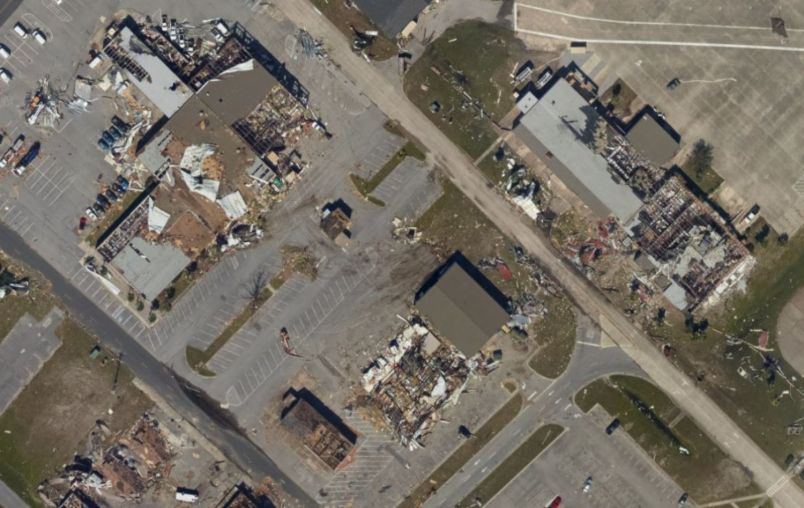
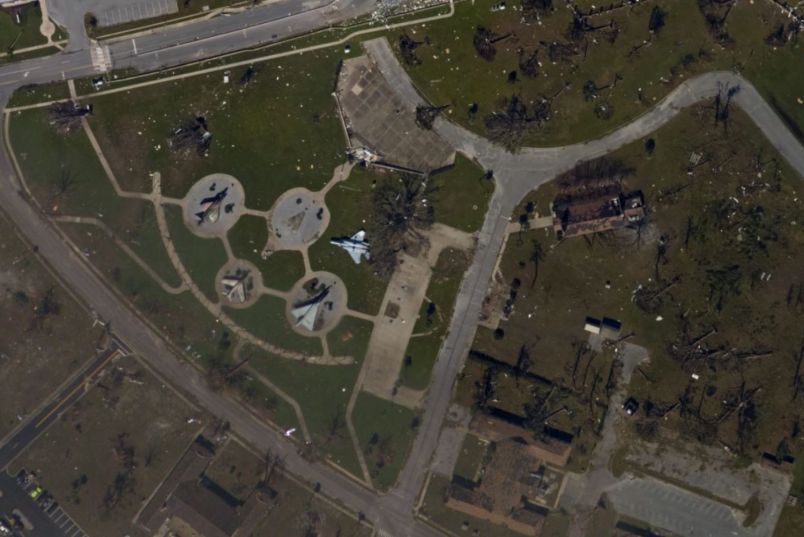
CODA:
There is no doubt, Tyndall Air Force Base will soon be “up and running again.”
Already, Air Force Special Tactics Airmen have cleared and established a runway at Tyndall and received the first aircraft at 7:06 p.m. last night, October 11.
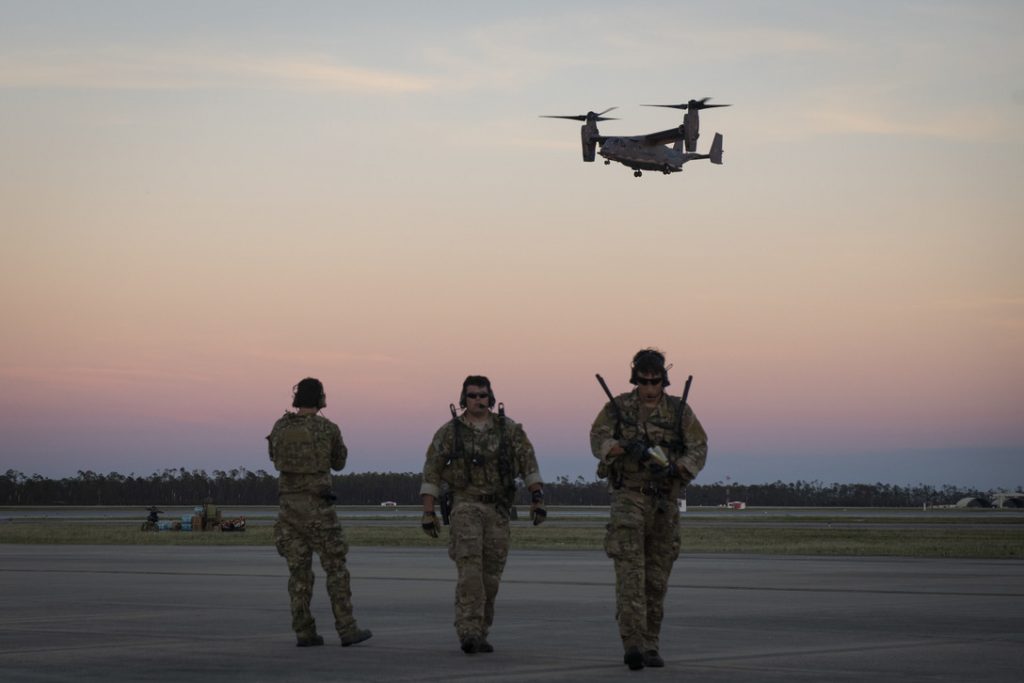
Special Tactics Airmen with the 23rd Special Tactics Squadron access an airfield on Tyndall Air Force Base, Fla., Oct. 11, 2018. (U.S. Air Force photo by Senior Airman Joseph Pick)
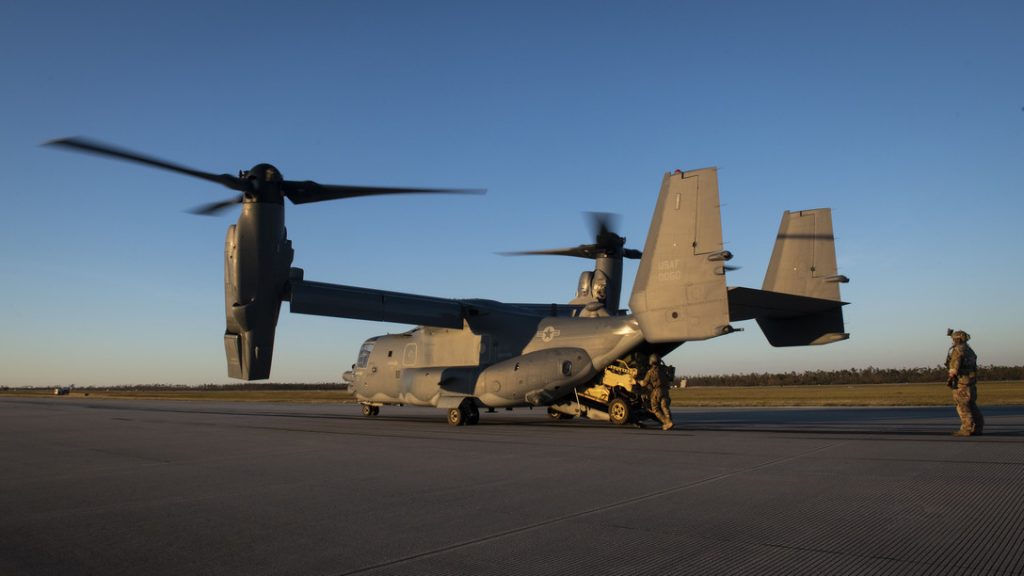
Special Tactics Airmen unload an all-terrain vehicle from a CV-22 Osprey assigned to the 8th Special Operations Squadron at Tyndall Air Force Base, Fla., Oct. 11, 2018. (U.S. Air Force photo by Senior Airman Joseph Pick)
The U.S. Air Force:
Special Tactics Airmen are in control of the airfield and are prepared to support airfield operations until further notice, which will allow support to facilitate humanitarian assistance to Tyndall AFB.
Lead Image: NOAA
















